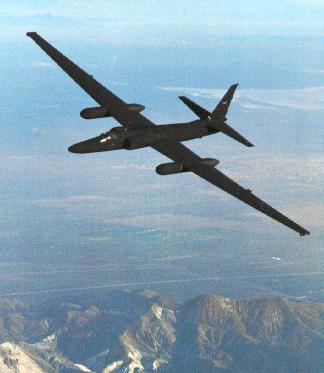 The Cold War remains a significant conflict in the history of the United States. Nuclear warfare was a constant threat, and the people lived in ongoing fear. However, conflicts with the Soviet Union took a new turn when dictator Joseph Stalin died in 1953. His successor, Nikita Khrushchev, believed that communism would engulf the word peacefully. He played out the Cold War with a new policy of friendly competition. Khrushchev believed in competing in areas such as scientific development. The result was many significant technological advances, particularly in space and the skies.
The Cold War remains a significant conflict in the history of the United States. Nuclear warfare was a constant threat, and the people lived in ongoing fear. However, conflicts with the Soviet Union took a new turn when dictator Joseph Stalin died in 1953. His successor, Nikita Khrushchev, believed that communism would engulf the word peacefully. He played out the Cold War with a new policy of friendly competition. Khrushchev believed in competing in areas such as scientific development. The result was many significant technological advances, particularly in space and the skies. The space race was one of these competitions that sprang from Khrushchev's policy. On October 4th, 1957, the Soviet Union surprised the US in their sudden launching of Sputnik, the world's largest satellite. Not to be outdone, America launched their own development program and succeeded in launching their first satellite January 1st, 1958. With this, the space race was on.
The space race was one of these competitions that sprang from Khrushchev's policy. On October 4th, 1957, the Soviet Union surprised the US in their sudden launching of Sputnik, the world's largest satellite. Not to be outdone, America launched their own development program and succeeded in launching their first satellite January 1st, 1958. With this, the space race was on. America also succeeded in developing the U-2, a plane used for spying missions. The U-2 could fly at high altitudes without detection, and pilots used infrared cameras to take photographs of Soviet Union military activity. The CIA put these planes to use in a series of secret flights over Soviet Territory following the rejection of President Eisenhower's "open skies" proposal in 1955 at the Geneva summit Conference.
America also succeeded in developing the U-2, a plane used for spying missions. The U-2 could fly at high altitudes without detection, and pilots used infrared cameras to take photographs of Soviet Union military activity. The CIA put these planes to use in a series of secret flights over Soviet Territory following the rejection of President Eisenhower's "open skies" proposal in 1955 at the Geneva summit Conference. The "open skies" proposal suggested that both the United States and the Soviet Union be allowed to conduct flights in each others' air space in order to monitor military activity. In defiance of the rejection of this proposal, Eisenhower continuously ordered high-altitude flights despite the fact that the Soviets had been aware of them since 1958. Officials started to grow nervous, especially after the Soviets fired a number of missiles at the planes. Missiles were not capable of reaching the high-altitude yet, but Eisenhower himself began to worry.
Finally, he ordered one last flight on May 1, carried out by pilot Francis Gary Powers. Unfortunately, a Soviet pilot succeeding in shooting down his plane. Not only was he imprisoned for ten years, but tensions between Soviet Russia and the US were renewed.
Steve Zhou and Madeleine Traver The Cold War Takes to the Skies
Informative summary of the race to the sky between the U.S. and the Soviet Union. A picture would have been nice.
ReplyDeleteThere is a lot of information in this post, which is nice
ReplyDeleteWonderful information, very descriptive and full of details. You really told the whole story of what occurred and didn't leave anything out. I do agree with JP though, a picture would have been nice. Great work though guys!
ReplyDeleteThe U-2 spy planes must have been useful in getting information while being undetected.
ReplyDeleteVery, very informative, which I really like! However, a picture could help. Nice job, though! =)
ReplyDeleteWIthout the Cold War, both the U.S. and Soviet Union probably couldn't have made this much of technological advances.
ReplyDeleteAn informative article on how planes further escalated the Cold War. Good job!
ReplyDeleteAwesome job! The pictures add a lot, good choices! Only one thing -- was Sputnik really the world's largest satellite?
ReplyDeletewell done! Good job on putting a picture in each section of the article.
ReplyDeletenice! i really like all the pictures. they really add to the article
ReplyDeletewell done!!! cool information about all of the technological advances. and also nice picture
ReplyDeletethe relevant pictures really enhanced the article. Great information!
ReplyDeleteNice - the pictures are a great addition to the information in the article.
ReplyDeleteGreat use of transitional words and phrases. This article was very concise yet maintained much of the important information. Bravo!
ReplyDelete